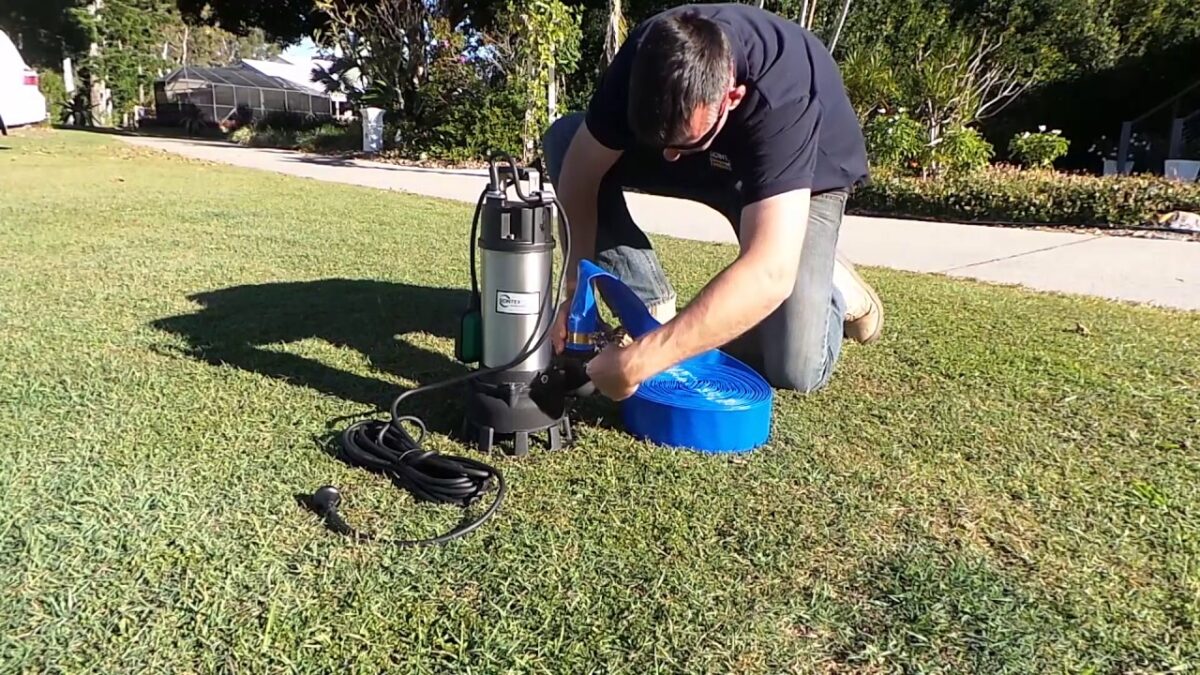Description
These 240 volt high flow submersible pumps are ideal for a difficult working environments where a powerful submersible pump is required. Perfect for construction sites, builders, farming and residential home owners. Move dirty water fast for any application.
Heavy Duty Submersible Centrifugal Water Pump with Float Switch
These high flow submersible water pumps are designed with a open impeller which makes them less prone to blockages and well suited for use with dirty fluids including light mud, sewage and even water containing some debris.
Paddock offer the most powerful pumps we’ve seen capable of running from a standard household 10 amp plug socket. These pumps are fitted with large heavy duty motors and are designed to move water fast.
These pumps come standard with a float switch fitted. When the float is in the upright vertical position, the internal ball drops inside the float and closes the circuit to activate the pump. When the fluid level drops, the float changes its orientation and stops the pump. The length of the float cable can be adjusted via the integrated cable clamp to custom configure the on/off trigger points if desired. Some customers not wanting the float switch have reported success in simply zip tying the float switch in the vertical ‘on’ position and this allows the pump to run continuously independent of fluid level.
Each pump includes a high quality silicon carbide mechanical seal with oil separation chamber ensuring water remains about pf the motor. This design results in long term reliable operation. Maintenance is a dream as the wet end pump can quickly be separated from the electric motor. The pump motor is constructed with 100% pure copper wire windings which helps it to run cooler and last longer for the user.
The pump is suitable for fresh, sewage or sea water*. Popular uses include water supply and disposal, home pressure pumping, irrigation, dairy, farming, fishery, residential pump, construction and building sites, sewage, grey water and flood management.
Submersible pumps rely on the fluid they’re submerged in to cool the powerful motors. Unlike non submersible pumps there is no fan to blow cooling air over a finned motor. Therefore it is important to ensure the pump is not allowed to run for extended periods of time out of the water. The included float switch is configured such that the pump will turn off before the water level drops below the motor. When installing these pumps, ensure the pit is large enough that the float switch can not become jammed in the on position as this can lead to the pump running dry eventually overheating the motor. Each motor includes thermal cutout protection as standard to save the pump from damage if it was accidentally allowed to run dry.
Submersible Pump Features:
- 5m lead with standard plug end
- Low Noise, smooth operation
- Compact Construction
- 12 month warranty
| Pump Specification | SPS1500AF | SPSP2200F |
|---|---|---|
| Voltage | 240V Single Phase | 240V Single Phase |
| Power | 1500 W | 2200 W |
| Motor | Continuous Duty Cycle when submerged | Continuous Duty Cycle when submerged |
| Flow Rate | 466 LPM | 700 LPM, 42 m3/hr |
| Inlet / Outlet | 2″ | 3″ |
| Pressure | 18m ~180kPa, 26 psi | 17m ~170kPa, 25psi |
| Max. Fluid temp. | 60°C | 60°C |
| Compatible Fluids | Water, Sea Water*, Sewage | Water, Sea Water*, Sewage |
| Approx. Weight | 29 kg | 33 kg |
| Approx Dimensions | 270x290x600mm | 270mmx290mmx700mm |
| Construction | Stainless steel motor casing Open impeller design Stainless steel shaft Silicone Carbide Mechanical Shaft Seal with secondary oil seal | Stainless steel motor casing Open impeller design Stainless steel shaft Silicone Carbide Mechanical Shaft Seal with secondary oil seal |
| Protection | Thermal ** | Thermal ** |
| Warranty | 1 yr | 1 yr |
*Long term use in sea water may lead to corrosion which is not covered by warranty. Whilst the pump will work with sea water it is not recommended for permanent installations in corrosive salt water environments.
** Whilst the pump motor includes thermal cutout protection, this should not be used to control fluid level. Allowing the pump to run dry repeatedly only to over-heat and stop via the thermal cutout protection will significantly reduce the operating life of your pump and this type of damage is not covered under the products warranty. The pumps float switch should be used to control fluid level and this is configured such that the motor is always submersed and cool.
http://www.scintex.com.au















